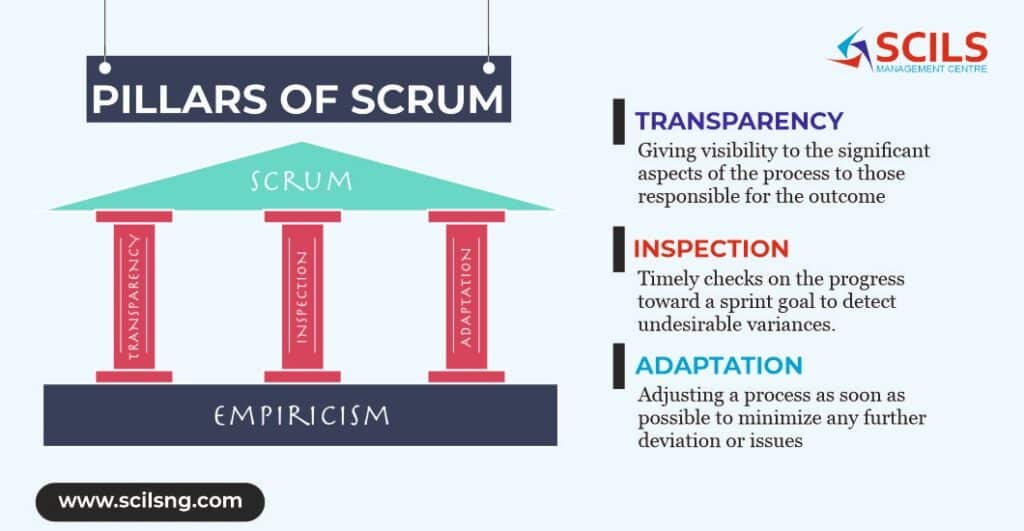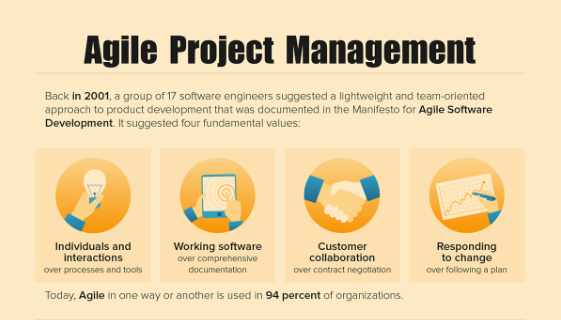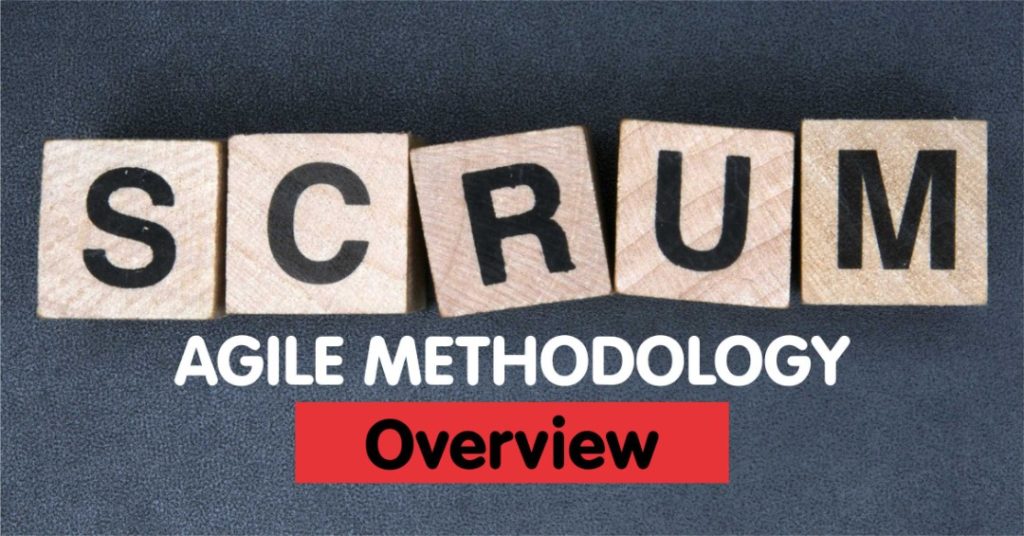Scrum is regarded as the Agile product development framework’s beating heart. Scrum was developed as a simple but effective approach for product development teams to adopt in order to produce high-quality products quickly. This approach combines incremental and iterative procedures to get around problems that are frequently present with conventional approaches, such as the Waterfall technique.
Pillars of Scrum
To create the optimal product, the Scrum theory focuses on observation and experimentation. This is made possible by process control, which is based on transparency, inspection, and adaptability. The Three Pillars refer to these three empirical process controls.
Scrum’s first pillar is transparency. This pillar is predicated on the notion that developers want process transparency in order to make decisions. By having a clear vocabulary about what is happening throughout the process, the team will be more likely to comprehend what they are doing. The Product Backlog, Task Boards or Burndown Charts, Daily Scrums, Sprint Reviews, Definition of Done, and Retrospective are all ways that Scrum promotes transparency. You can see that the transparency pillar is evident at several points during the Scrum process. This is an important advantage since it shows the team members who are responsible for the project that they are valued for their work in achieving the goal.
The second pillar of Scrum is inspection. Constant inspection is used to produce better results while preventing difficulties in the product development process. Additionally, Scrum users must make sure that they examine the final product and the artefacts during a Sprint. Customers’ reviews can also be a process of inspection in which developers look over the customers’ open and sincere input to make adjustments. Typically, during the Scrum Artefacts process, inspections take happen. Towards the end of a goal, the team typically inspects the product to look for any problems or differences. The deliverables are examined and customer and stakeholder input is gathered on the Scrum board, which also serves as the foundation for the inspection. Furthermore, the inspection could also be based on the Product Backlog and approval granted by the Product Owner.
The third and last pillar of the Scrum methodology is adaptation. Teams should be willing to swiftly adapt to the new demands when a turning point in the product development process occurs. Applying the third pillar of the Scrum process incorrectly results in failure to adapt to the changes. In the context of Agile, the agile approach includes adaptation. The teams must always look for ways to adapt and improve by altering what isn’t working for what will. During the Daily Scrum, a project’s adaptive phases start. The Scrum Team must conduct small tests to determine what is not functioning, then fix the problems during meetings. The Scrum Team will solicit input on the product during the Sprint Review phase in order to include the requested features into the final release. Additionally, the team will talk about internal issues and fresh concepts during the Sprint Retrospective process in order to prepare for a new strategy that adds more value to the product.


